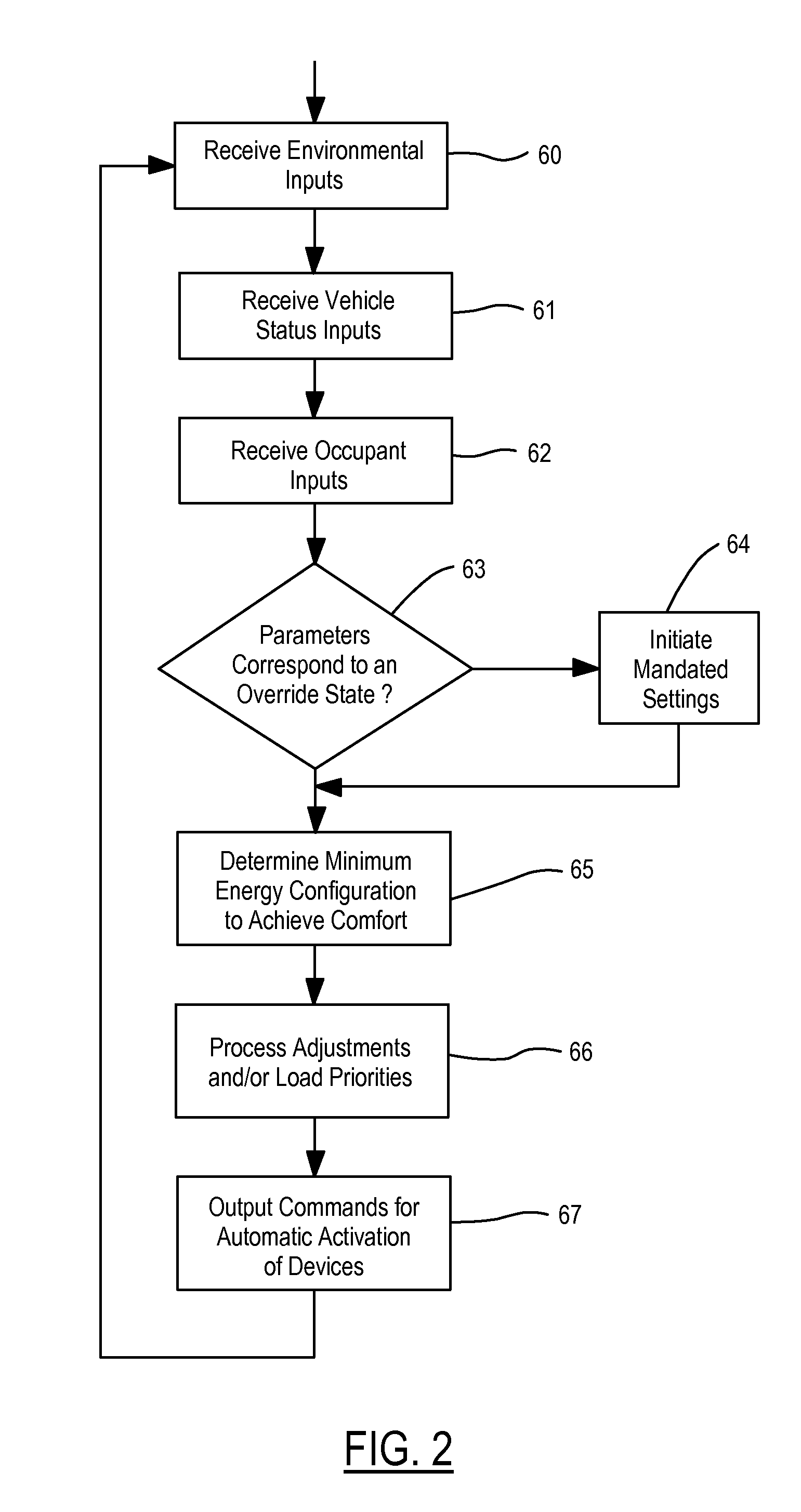Vehicle comfort system with efficient coordination of complementary thermal units
a technology of complementary thermal units and vehicle comfort, which is applied in the field of vehicle comfort systems with efficient coordination of complementary thermal units, can solve the problems of increasing the energy consumption of vehicles to obtain a comfortable climate, the control of supplemental devices has not been integrated with the main hvac system, and the inability to manually set devices, etc., to achieve the greatest comfort benefit, the effect of increasing the relative proportion of energy and achieving the highest energy efficiency
- Summary
- Abstract
- Description
- Claims
- Application Information
AI Technical Summary
Benefits of technology
Problems solved by technology
Method used
Image
Examples
Embodiment Construction
[0015]Referring now to FIG. 1, an automotive vehicle includes a driver seat 10, a passenger seat 11, and a rear seat 12 (which may be a bench seat, rear bucket seats, is or a third row seat). A steering wheel 13 located in front of driver seat 10 includes an internal heat source on the surfaces contacted by the driver's hands (i.e., a touchpoint surface). A known manner of heating steering wheel 31 may be used such as electrical resistance heating based on a positive temperature coefficient (PTC) material built into the steering wheel.
[0016]Additional touchpoint surfaces are preferably included in seats 10-12 to conduct heat to or from the occupants. Specifically, seat thermal units 15-17 can provide heating and / or cooling using known methods such as integral resistive heating elements, integrated chillers, or thermoelectric devices. In addition, an auxiliary HVAC 18 could alternatively be used to heat or cool one or more touchpoint surfaces.
[0017]The vehicle includes a forced-air H...
PUM
 Login to View More
Login to View More Abstract
Description
Claims
Application Information
 Login to View More
Login to View More - R&D
- Intellectual Property
- Life Sciences
- Materials
- Tech Scout
- Unparalleled Data Quality
- Higher Quality Content
- 60% Fewer Hallucinations
Browse by: Latest US Patents, China's latest patents, Technical Efficacy Thesaurus, Application Domain, Technology Topic, Popular Technical Reports.
© 2025 PatSnap. All rights reserved.Legal|Privacy policy|Modern Slavery Act Transparency Statement|Sitemap|About US| Contact US: help@patsnap.com



